- HOW TO DO
- 0 likes
- 387 views
- 0 comments

Guide to the composition of an electrical panel
Creating an electrical panel requires precision and attention to detail, but by following the right steps it is absolutely possible to obtain an excellent result. In this article, we will show you the key steps and what you need to purchase to correctly assemble your electrical panel.
Definition of Electrical Panel
The electrical panel, also known as the switchboard, represents a fundamental element of the home electrical system. Positioned immediately after the meter, it plays a crucial role in the organization and safety of electrical connections inside the home.
Types of Electrical Panel
There are two main types of electrical panels on the market:
- Recessed panel: integrated into the wall, optimizes space;
- Wall picture: fixed externally to the wall using anchoring systems such as Fischer.
In addition to the typological distinction, the cost of an electrical panel can vary significantly depending on its composition and the functions it offers.
The Functions of the Electrical Panel
The electrical panel has the task of distributing electrical energy within the home, dividing the power supply into specific areas or sectors, such as the different rooms, electrical sockets, switches, and control systems. air conditioning. Thanks to this subdivision, the management and safety of electrical connections become simpler and more immediate.
By following our guide to the composition and purchase of your electrical panel, you will be able to better orient yourself in choosing the components best suited to your needs, guaranteeing a final result of quality and safety.
Fundamental Components of an Electrical Panel
The heart of every electrical system lies in its ability to distribute energy safely and efficiently, a task entrusted to the technical complexity of the electrical panel. This critical element ensures the management and protection of the entire system, but what are its key components?
Thermal Magnetic Switches
Essential for every electrical panel, circuit breakers play a dual role: they protect against overloads and short circuits. Available in various configurations, such as those with 1 or 2 modules, they adapt to different amperage needs, thus offering targeted and efficient protection.
Thermal Magnetic Differentials
Similar to circuit breakers, circuit breakers also integrate protection against earth faults, significantly increasing the safety of the electrical system. They are generally found in 2-module formats, ready to intervene in the event of discrepancies in the electrical flow.
Pure or lifesaving differentials
Pure RCDs, commonly known as RCDs, are specifically designed to protect people from electrocution by instantly interrupting the power supply in the event of direct or indirect contact with live elements. Their presence is now an indispensable requirement in every modern electrical panel.
Configuration of the Thermal Magnetic Differentials
- The lighting system: usually managed by the first circuit breaker for internal and external lighting.
- 10A sockets: the second differential is dedicated to standard sockets, for the use of commonly used appliances.
- 16A sockets: the third differential, however, is designed for devices that require greater power, such as some large household appliances.
To better understand the differentiation and importance of 10A and 16A sockets within the system, access our dedicated article which explores in detail the characteristics and applications of the different electrical sockets.
The composition of an electrical panel, therefore, adapts not only to the basic needs of a system but also to the specific requests for safety and advanced functionality, guaranteeing a balance between reliability and technological innovation.
Importance of circuit breakers in the electrical panel
Circuit breakers represent an essential component for the safety of every electrical system. Their primary role is to intervene promptly in the event of a short circuit, thus protecting the system from potentially serious damage.
How do circuit breakers work?
The operating principle of circuit breakers is based on the ability to immediately interrupt the current in the circuit in the presence of anomalies. This happens, for example, when there is direct contact between phase and neutral, typically between blue cable and brown cable, which can cause a dangerous short circuit.
- Thermal circuit breakers prevent further damage by acting quickly.
- They also intervene in the event of a current absorption that is too high for the circuit.
In-depth information on circuit breakers
For those who wish to deepen their knowledge on circuit breakers and better understand the differences between pure RCDs, circuit breakers and RCDs, you can consult our dedicated article. Here we illustrate in detail the characteristics and functionality of these important devices.
Electrical panel components and their operation
Thermal circuit breakers are crucial components within electrical panels, as they offer essential protection in risk situations such as short circuits, excessive current intake or leaks in the system. These devices combine the characteristics of both pure RCDs and circuit breakers, thus offering a versatile solution for the safety of electrical systems.
The function of differentials
A pure differential is designed to provide optimal protection to the electrical system. It works by constantly comparing the current entering the circuit with that exiting the circuit, intervening immediately in the event of discrepancies that may indicate a potentially dangerous leak.
Regulations for civil electrical panels
The installation practices of electrical panels are strictly regulated. Complying with specific regulations is essential to guarantee the safety and efficiency of the system.
The CEI 64-8 standard
The CEI 64-8 standard represents the legislative reference point for the installation of domestic electrical panels. His consultation and adherence are essential not only to ensure a state-of-the-art installation but also to respect the bureaucratic aspects linked to the construction of the systems.
Selection of materials according to regulations
The choice of materials for electrical panels must take into account the regulations in force. Electrical cables, for example, should bear the IMQ mark if required and guarantee resistance to corrosive, thermal and mechanical conditions. It is always advisable to consult the CEI standards and the CEI-UNEL tables for an in-depth understanding of the required specifications.
- Make sure that the electrical cables comply with current regulations.
- Consult the CEI standards for the correct installation of electrical panels.
- Check the suitability of the materials for the intended conditions of use.

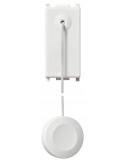
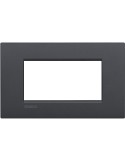
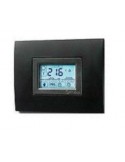

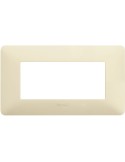
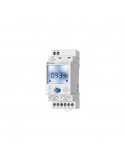
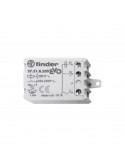
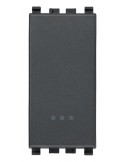
Comments (0)